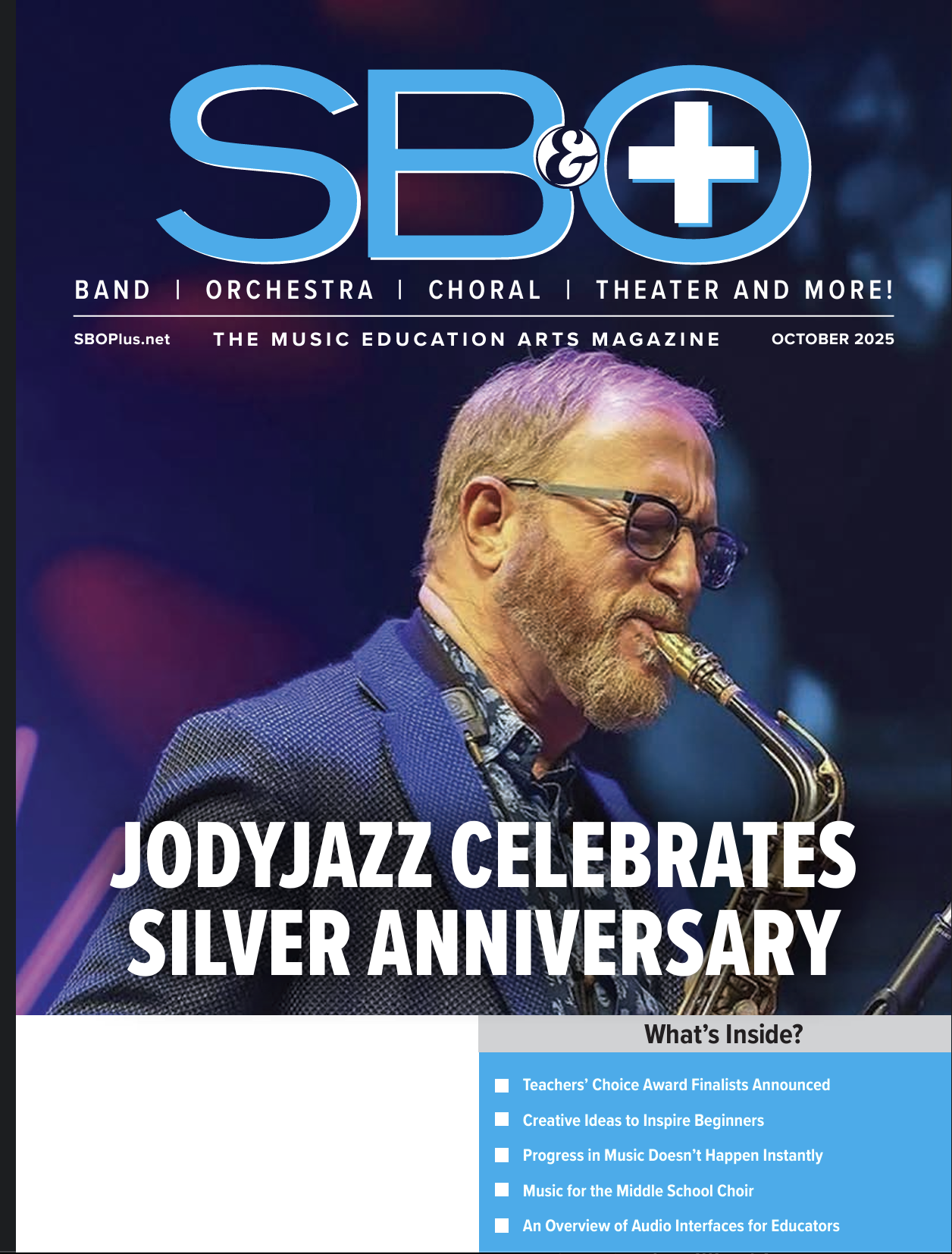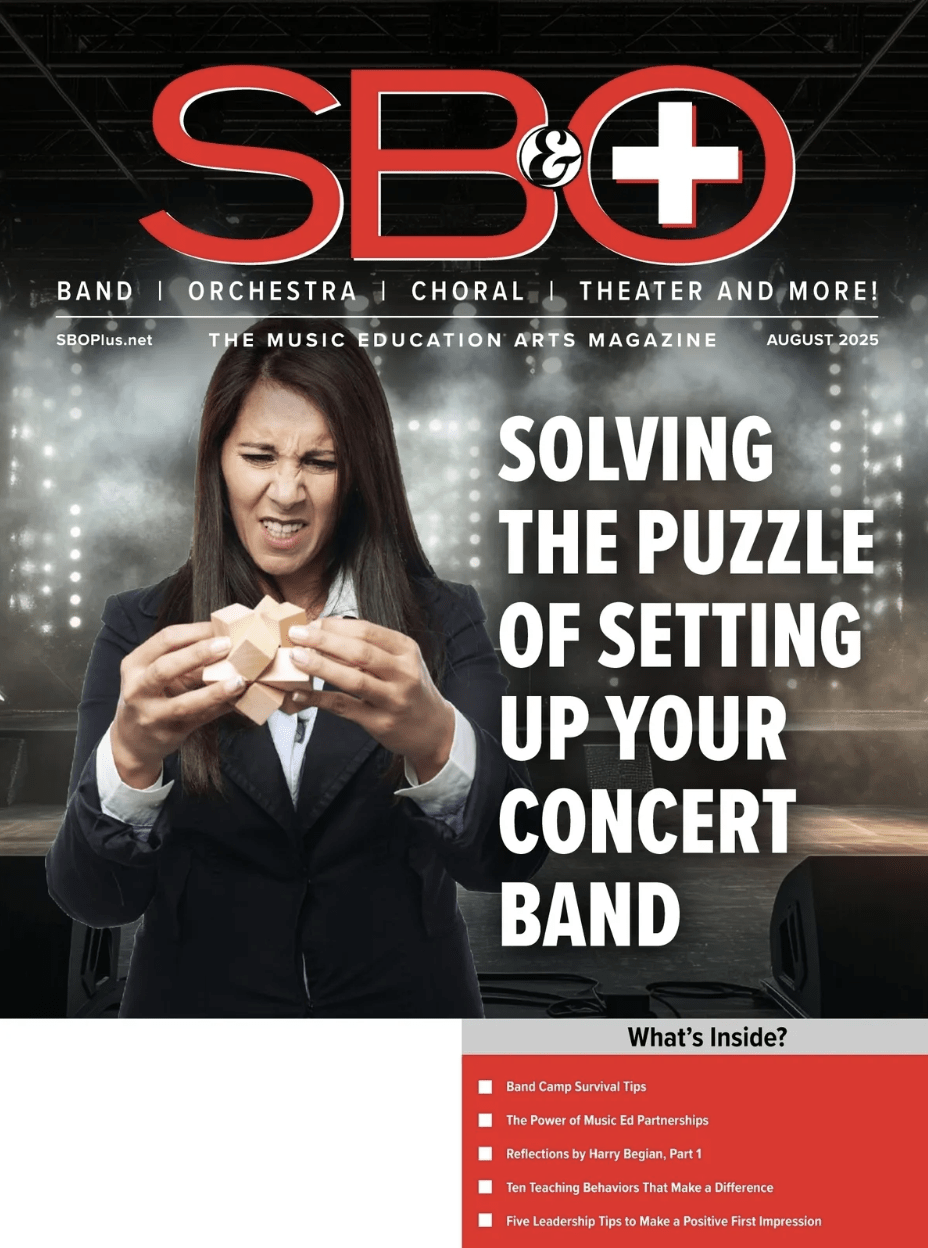Before we delve into this in part 2 (see the February issue for part 1), a word of caution: All students are different. Every human being has a diverse morphology, and we all perceive instructions differently. While the below syllables tend to work well for most young musicians, be prepared to alter these instructions, depending on the student.
Flute
 The flute articulation is more like brass articulation than the other woodwinds. For the best results, the tongue will lightly interrupt the air stream. To articulate in this manner, the tongue should be relaxed in the mouth and the tip of the tongue will lightly tap right behind the top teeth where the teeth and gums meet. “TOO” and “DOO” are syllables that will, with a steady air stream, produce a clear articulation. Watch young flutists carefully when this concept is first introduced, as some students may want to articulate in-between the top and bottom teeth, closing the aperture off with their tongue. If this is the case, the tongue will be visible between their lips while playing. When you see this, having the flutist say “TOO” or “DOO” without the flute will remind them of the correct tongue placement.
The flute articulation is more like brass articulation than the other woodwinds. For the best results, the tongue will lightly interrupt the air stream. To articulate in this manner, the tongue should be relaxed in the mouth and the tip of the tongue will lightly tap right behind the top teeth where the teeth and gums meet. “TOO” and “DOO” are syllables that will, with a steady air stream, produce a clear articulation. Watch young flutists carefully when this concept is first introduced, as some students may want to articulate in-between the top and bottom teeth, closing the aperture off with their tongue. If this is the case, the tongue will be visible between their lips while playing. When you see this, having the flutist say “TOO” or “DOO” without the flute will remind them of the correct tongue placement.
Clarinet
The clarinet enters the embouchure at a steep angle. As a result, for best results, the performer should think about a “tip-to-tip” approach. That is, the tip of the tongue should strike the underside of the tip of the reed. To achieve this, the tongue should be curved,  and should be centered relatively far back in the mouth. “TA” will simply not achieve the desired result. Rather, “DIH” and “TIH” will work best. “DIH” works better for more legato articulations, while “TIH” is appropriate for more staccato playing. For even more extreme separation, “TI” works quite well.
and should be centered relatively far back in the mouth. “TA” will simply not achieve the desired result. Rather, “DIH” and “TIH” will work best. “DIH” works better for more legato articulations, while “TIH” is appropriate for more staccato playing. For even more extreme separation, “TI” works quite well.
Saxophone
While the basics of physical tone production (the single reed and mouthpiece) for clarinet and saxophone appear to be similar, nuances of instrument carriage and mouthpiece construction affect sizable differences in approach. While “tip-to-tip” tonguing is ideal for the clarinetist, the same approach will yield unreliable results for the saxophonist. Rather, a point just behind the tip of the tongue (“two taste-buds behind the tip” is a good analogy for students) should touch the underside of the tip of the reed.
In terms of syllables, the standard “TA” will have negative effects for young saxophonists. Due to the angle and position of the  mouthpiece in the mouth, the resulting sound will usually approximate a slap-tongue, with considerable noise and percussive impact. Obviously, this is undesirable in any fine sound. A different set of syllables will produce far better results for the saxophonist.
mouthpiece in the mouth, the resulting sound will usually approximate a slap-tongue, with considerable noise and percussive impact. Obviously, this is undesirable in any fine sound. A different set of syllables will produce far better results for the saxophonist.
A basic, legato articulation can be achieved through a steady air-stream, with the tongue approximating the same motion as when saying the syllable “DOO.” If a bit more separation is desired, the saxophonist can utilize the syllable “TOO.” For most saxophonists, this conception will result in a clean, clear articulation, with no extraneous noise.
Oboe & Bassoon
While double reeds can often seem foreign to the non-specialist teacher, articulation is far easier than it would initially appear. For both oboe and bassoon, a point just behind the tip of the tongue should strike the underside of the tip of the bottom reed. For oboe, a syllable of “DIH” or “TIH” (as on clarinet) often works quite well.
While there are few other true similarities between bassoon and saxophone, the angle of attack between the reed and tongue is quite similar. The student would do well to use “DOO” or “TOO” as standard syllables here, as well.
 Double Tonguing
Double Tonguing
There is a great deal of interest regarding double tonguing for woodwinds among many band directors. However, to be blunt, there is very little reason to worry about this technique with young performers or even the most advanced high-schoolers. The single tongue on all woodwinds should be used well past repeated sixteenths at 120 bpm. Double tonguing, especially on the single and double reeds, sounds odd and uneven until at least repeated sixteenths at a metronome marking of quarter note equals 132. If a student struggles to perform quickly enough using the single tongue, work on strengthening the basic skill before you leap to a more advanced method.
What About Anchor Tonguing?
Some flutists ascribe to the practice of anchor tonguing, or “tongue controlled embouchure.” While this approach is not common, it is not unheard of. For most reed instrumentalists, anchor tonguing should not be the first option. However, for some students with long tongues, it can often be the most comfortable and effective method. If the student has consistent and sustained problems with clear articulation over several weeks after attempting the above conceptions, and it appears tongue-length is the issue, suggest the young player tuck the tip of their tongue against the inside of their bottom teeth, then try the above syllables.
Conclusion
Ultimately, only two items are truly important in woodwind pedagogy:
1.Does it sound good?
2. Is it infinitely repeatable across a lifetime with no negative side-effects for the student?
It can be enticing to strip all wind pedagogy down to a “one size fits all” approach. However, every woodwind is different. Indeed, every human being holding an instrument is diverse and will approach every technique in a slightly different manner. We hope no matter their differences, the above techniques will help your students achieve the ultimate goal: Confident and joyful woodwind performance across a lifetime.





























